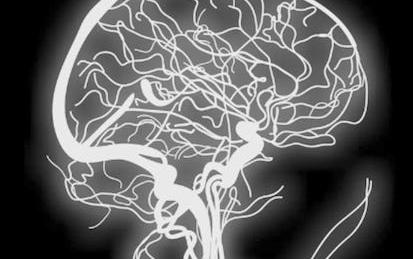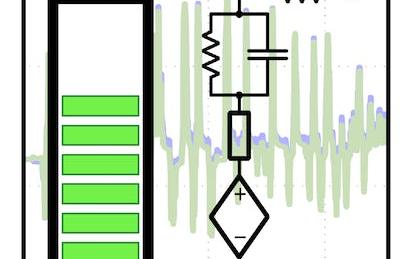

Our Courses

The Finite Element Method for Problems in Physics
This course is an introduction to the finite element method as applicable to a range of problems in physics and engineering sciences. The treatment is mathematical, but only for the purpose of clarifying the formulation. The emphasis is on coding up the formulations in a modern, open-source environment that can be expanded to other applications, subsequently. The course includes about 45 hours of lectures covering the material I normally teach in an introductory graduate class at University of Michigan.
-
Course by

-
 Self Paced
Self Paced
-
 62 hours
62 hours
-
 English
English

Chemical Biology
Chemical biology is a burgeoning field that has rapidly risen to prominence. This surge of interest has been fuelled by chemical biology’s applicability to understanding critical processes in live cells or model organisms in real time. This success has arisen because chemical biology straddles a nexus between chemistry, biology, and physics. Thus, chemical biology can harness rapid chemistry to observe or perturb biological processes, that are in turn reported using physical assays, all in an otherwise unperturbed living entity.
-
Course by

-
 Self Paced
Self Paced
-
 21 hours
21 hours
-
 English
English

Global Warming I: The Science and Modeling of Climate Change
This class describes the science of global warming and the forecast for humans’ impact on Earth’s climate. Intended for an audience without much scientific background but a healthy sense of curiosity, the class brings together insights and perspectives from physics, chemistry, biology, earth and atmospheric sciences, and even some economics—all based on a foundation of simple mathematics (algebra).
-
Course by

-
 Self Paced
Self Paced
-
 39 hours
39 hours
-
 English
English

Sports and Building Aerodynamics
COURSE ABSTRACT: \nHave we reached the boundaries of what can be achieved in sports and building design? The answer is definitely “NO”. This course explains basic aspects of bluff body aerodynamics, wind tunnel testing and Computational Fluid Dynamics (CFD) simulations with application to sports and building aerodynamics. It is intended for anyone with a strong interest in these topics. Key fields addressed are urban physics, wind engineering and sports aerodynamics.\n\nCOURSE CONTENTS:\nThe course consists of 6 weeks.
-
Course by

-
 Self Paced
Self Paced
-
 24 hours
24 hours
-
 English
English

The Science of the Solar System
Learn about the science behind the current exploration of the solar system in this free class. Use principles from physics, chemistry, biology, and geology to understand the latest from Mars, comprehend the outer solar system, ponder planets outside our solar system, and search for habitability in our neighborhood and beyond. This course is generally taught at an advanced level assuming a prior knowledge of undergraduate math and physics, but the majority of the concepts and lectures can be understood without these prerequisites.
-
Course by

-
 Self Paced
Self Paced
-
 30 hours
30 hours
-
 English
English

Fundamental Neuroscience for Neuroimaging
Neuroimaging methods are used with increasing frequency in clinical practice and basic research. Designed for students and professionals, this course will introduce the basic principles of neuroimaging methods as applied to human subjects research and introduce the neuroscience concepts and terminology necessary for a basic understanding of neuroimaging applications.
-
Course by

-
 Self Paced
Self Paced
-
 9 hours
9 hours
-
 English
English

Astro 101: Black Holes
What is a black hole? Do they really exist? How do they form? How are they related to stars? What would happen if you fell into one? How do you see a black hole if they emit no light? What’s the difference between a black hole and a really dark star? Could a particle accelerator create a black hole? Can a black hole also be a worm hole or a time machine? In Astro 101: Black Holes, you will explore the concepts behind black holes.
-
Course by

-
 Self Paced
Self Paced
-
 18 hours
18 hours
-
 English
English

Genomics: Decoding the Universal Language of Life
What is a genome? A genome contains all of the information that a cell needs to develop, function, and reproduce itself, and all the information needed for those cells to come together to form a person, plant, or animal. Genomes contain an organism’s complete set of genes, and also the even tinier genetic structures that help regulate when and how those genes are used. The ability to regrow a torn ligament, the clues that might predict the onset of mental illness, the nutritional potential of crops, and even the history of life itself, are all encoded in genomes.
-
Course by

-
 Self Paced
Self Paced
-
 37 hours
37 hours
-
 English
English

State Estimation and Localization for Self-Driving Cars
Welcome to State Estimation and Localization for Self-Driving Cars, the second course in University of Toronto’s Self-Driving Cars Specialization. We recommend you take the first course in the Specialization prior to taking this course. This course will introduce you to the different sensors and how we can use them for state estimation and localization in a self-driving car.
-
Course by

-
 Self Paced
Self Paced
-
 27 hours
27 hours
-
 English
English

Games, Sensors and Media
You will learn to make fluid digital interactive experiences that are suitable for gaming and use the advanced sensor hardware built into the iPhone and iPad. This includes drawing 2D graphics, playing sounds and music, integrating with Game Center, the iOS physics engine and detecting device orientation and location. Upon completing this course, you will be able to: 1. Use the reverse geocode service to convert latitude and longitude to location names 2. Implement GeoFences to make an app efficiently monitor an iOS device’s location 3.
-
Course by

-
 Self Paced
Self Paced
-
 17 hours
17 hours
-
 English
English

Kinetics: Studying Spacecraft Motion
As they tumble through space, objects like spacecraft move in dynamical ways. Understanding and predicting the equations that represent that motion is critical to the safety and efficacy of spacecraft mission development.
-
Course by

-
 Self Paced
Self Paced
-
 21 hours
21 hours
-
 English
English

Introduction to Self-Driving Cars
Welcome to Introduction to Self-Driving Cars, the first course in University of Toronto’s Self-Driving Cars Specialization. This course will introduce you to the terminology, design considerations and safety assessment of self-driving cars.
-
Course by

-
 Self Paced
Self Paced
-
 35 hours
35 hours
-
 English
English

Semiconductor Physics
This course can also be taken for academic credit as ECEA 5630, part of CU Boulder’s Master of Science in Electrical Engineering degree. This course introduces basic concepts of quantum theory of solids and presents the theory describing the carrier behaviors in semiconductors. The course balances fundamental physics with application to semiconductors and other electronic devices. At the end of this course learners will be able to: 1. Understand the energy band structures and their significance in electric properties of solids 2. Analyze the carrier statistics in semiconductors 3.
-
Course by

-
 Self Paced
Self Paced
-
 15 hours
15 hours
-
 English
English



